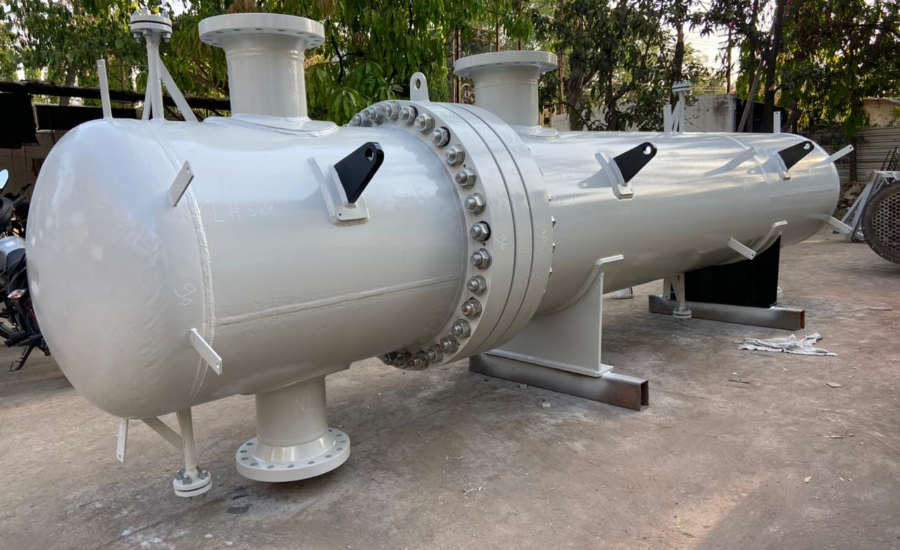
At R&D Therm, we specialize in designing and manufacturing shell and tube heat exchangers, the most widely used heat exchanger type in oil refineries, chemical plants, and other high-pressure industrial processes. Our commitment to quality, precision, and innovation makes us a trusted global supplier of both standard and custom-engineered solutions tailored to meet your specific requirements.
We use only premium-grade materials to ensure durability and performance. Our manufacturing processes are continuously monitored to meet the highest industry standards, including ASME U stamp certification for our pressure vessels. Our team of certified welders employs cutting-edge techniques and technologies, guaranteeing products that are built to last.
Every industrial process is unique, and we understand the need for tailored solutions. R&D Therm offers custom-designed shell and tube heat exchangers to match your specific operational requirements, ensuring optimal efficiency and reliability.
As a leading global supplier, R&D Therm delivers shell and tube heat exchangers and pressure vessels to clients worldwide. Whether you need a standard unit or a bespoke solution, our expertise and experience ensure we meet your needs with precision.
From initial consultation to post-installation support, our team is committed to providing exceptional service. We work closely with clients to understand their needs and deliver solutions that exceed expectations.
Our heat exchangers are engineered for a wide range of industries and applications, including:
R&D Therm offers a range of shell and tube heat exchanger designs to suit diverse applications:
Our heat exchangers are crafted using premium-grade materials like stainless steel, carbon steel, titanium, Hastelloy, and Sanicro 28. Each unit is manufactured in compliance with ASME Section VIII standards, earning the prestigious ASME U stamp for pressure vessels. Our certified welders utilize advanced techniques to ensure long-lasting performance and reliability.
We understand that every industrial process is unique. That’s why R&D Therm offers custom-designed shell and tube heat exchangers tailored to your specific operational needs. From high-pressure applications to corrosive environments, our solutions maximize efficiency and reliability.
From initial consultation to post-installation support, R&D Therm is committed to exceptional service. We collaborate closely with clients to understand their needs and deliver custom heat exchanger solutions that exceed expectations.
As a leading heat exchanger manufacturer, R&D Therm delivers shell and tube heat exchangers and pressure vessels to clients worldwide. Whether you need a standard unit or a bespoke solution, our expertise ensures precision and reliability.
Stainless Steel / Carbon Steel / High Alloy Steels like Titanium, Hastelloy, Sanicro 28.
All R&D Therm distillation columns are manufactured in strict compliance with ASME Section VIII, guaranteeing the highest standards of quality and safety. Our certified welders employ cutting-edge techniques to deliver products that are built to last.
Please feel free to contact us.
C14/2, NICE Industrial Area, MIDC Satpur, Nashik, 422007, Maharashtra, India
C-50, MIDC Area, Malegaon, Sinnar, Nashik 422103.
Contact Now